A well-designed patio should feel like a natural extension of your garden — not a separate, disconnected space. The best patios merge outdoor living with greenery, blurring the lines between hardscape and nature. When done right, your patio can become a serene retreat surrounded by the sights, sounds, and scents of your garden.
Whether you’re updating an existing space or starting from scratch, these seven patio design ideas will help you create a harmonious, garden-inspired outdoor haven.
1. The Green Oasis: Patios Surrounded by Plants
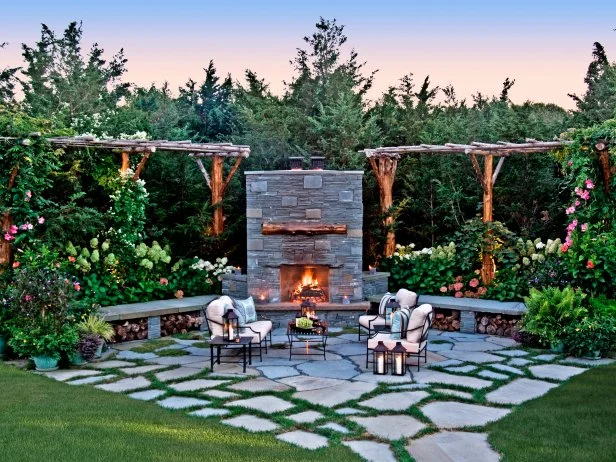
One of the simplest ways to blend a patio into your garden is by framing it with lush greenery. Surround the seating area with shrubs, flowering perennials, and potted plants to create a living wall that softens the edges of stone or wood.
Design ideas:
- Plant climbing vines like jasmine, honeysuckle, or clematis along trellises or pergolas for vertical greenery.
- Use mixed-height planting—tall ornamental grasses behind seating, medium-height shrubs along the border, and low groundcovers near edges.
- Include potted plants in varying sizes to add depth and flexibility—perfect for smaller patios.
This “living frame” transforms your patio into a green cocoon, where nature surrounds you from every angle.
Best for: Nature lovers who want to feel immersed in greenery.
2. The Natural Transition: Stepping-Stone Pathways
Patios often look disconnected when there’s a harsh transition between stone and soil. To avoid that, use stepping stones or gravel pathways that lead gradually from the patio into the garden. This creates a smooth, visual and physical flow between the spaces.
How to design it:
- Choose natural stone slabs like flagstone, bluestone, or sandstone for organic appeal.
- Fill gaps between stones with creeping thyme, moss, or sedum—plants that can handle foot traffic.
- Surround the pathway with mulch or gravel that matches your patio color palette.
This design mimics the way garden trails meander through nature, making your patio feel like part of the landscape rather than an addition to it.
Best for: Cottage gardens and relaxed, informal landscapes.
3. The Woodland Retreat: Shade and Softscaping
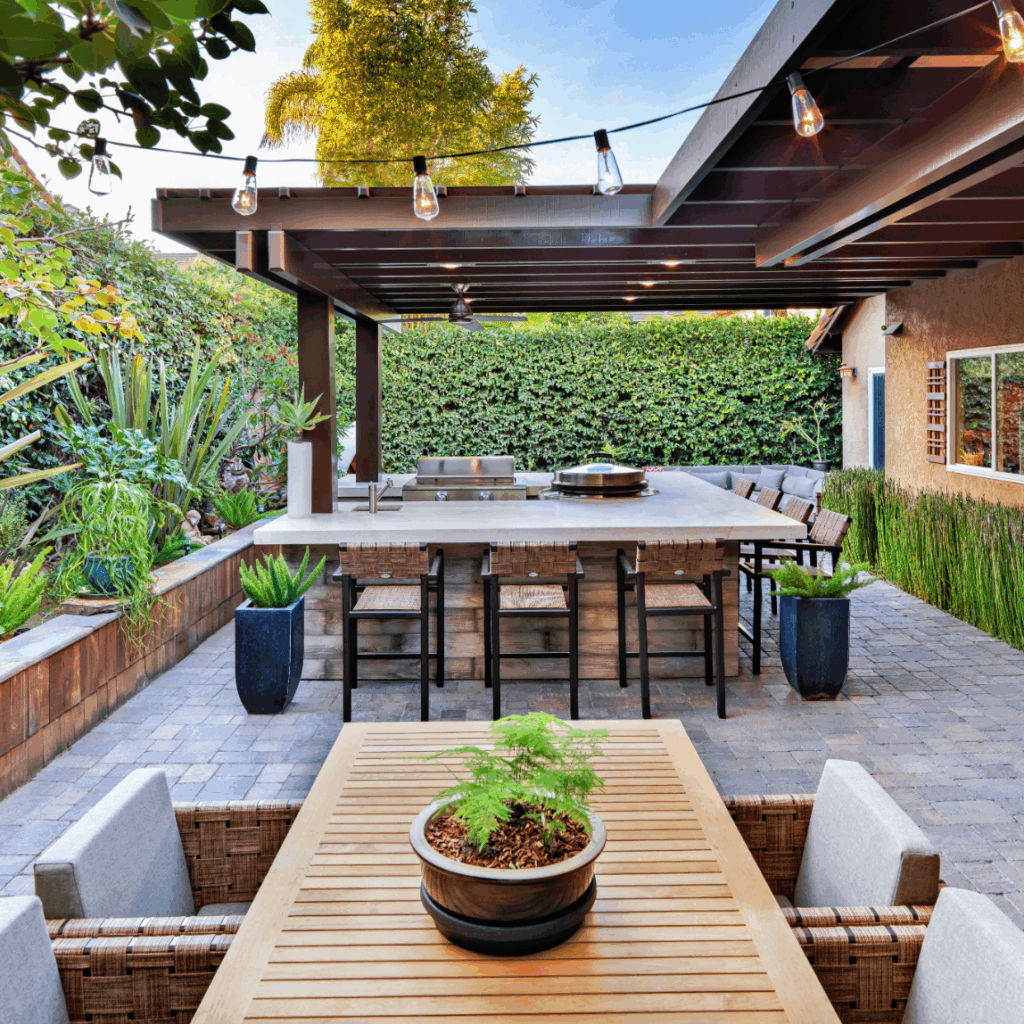
If your patio sits beneath mature trees or near shaded areas, turn it into a woodland retreat. Let the surrounding greenery set the tone with natural stone, rustic textures, and muted colors.
Design elements to include:
- Use irregular flagstones or gravel flooring for a forest-floor feel.
- Surround with ferns, hostas, and hydrangeas that thrive in shade.
- Add moss between pavers or on retaining walls for a naturally aged look.
- Use string lights or lanterns to create a cozy twilight atmosphere.
This design emphasizes subtle beauty and tranquility — a perfect escape for reading, meditation, or simply enjoying nature’s quiet.
Best for: Shady backyards and nature-inspired spaces.
4. The Water Garden Patio: Serenity by Design
Few things connect a patio to a garden like the sound and sight of water. Whether it’s a bubbling fountain, koi pond, or small waterfall, water features bring serenity and motion to your outdoor space.
Ways to integrate water features:
- Install a small reflecting pool beside the patio with aquatic plants like lilies or papyrus.
- Add a stone fountain or wall-mounted spout for a soft, ambient sound.
- Design a stream-like feature that flows gently from one side of the garden to the patio’s edge.
Surround the water with moisture-loving plants such as iris, ferns, and cattails to create a lush, natural environment.
Best for: Zen-inspired or tropical-style gardens.
5. The Cottage Connection: Blending Flowers and Function
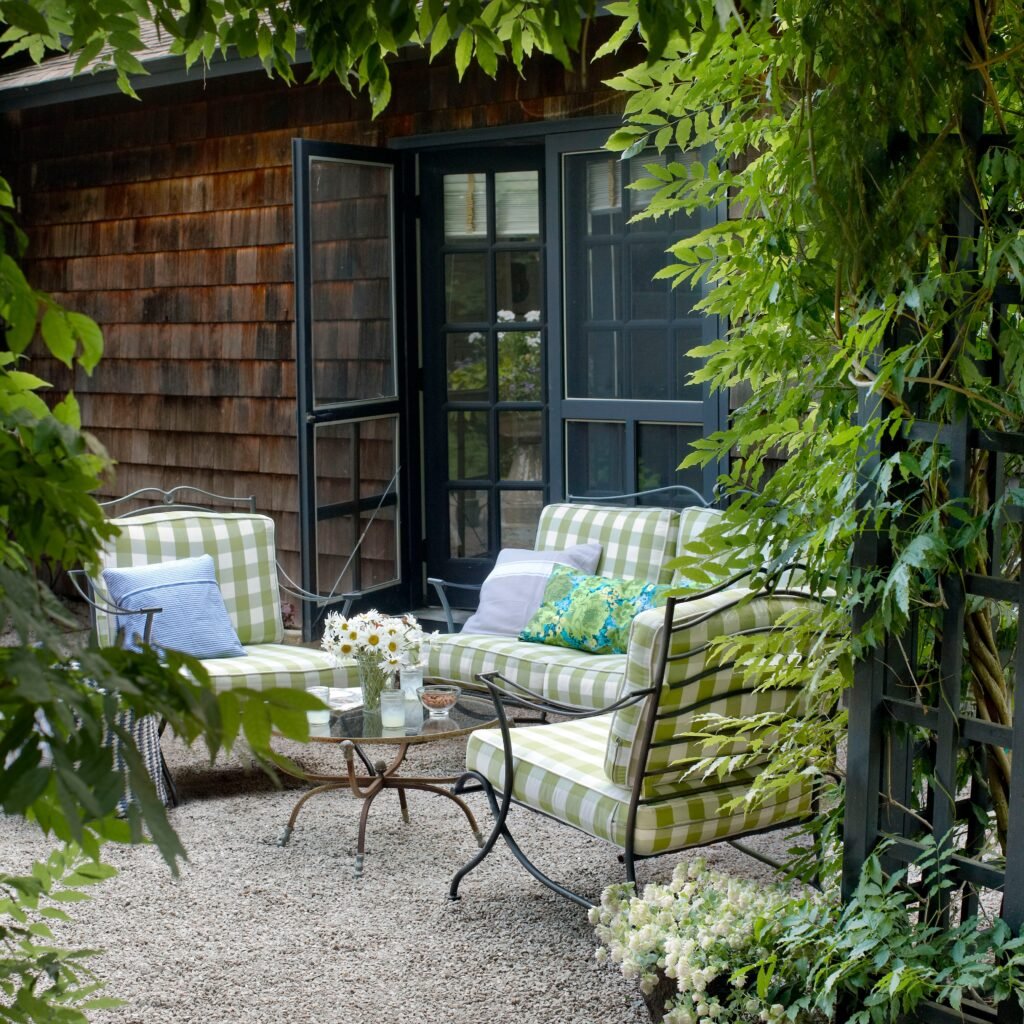
If you love a vibrant, colorful garden, design your patio to melt into a border of blooms. Cottage-style patios use informal plantings, winding edges, and whimsical details to create a seamless transition.
Design inspiration:
- Allow flowering borders (lavender, roses, daisies, or salvia) to grow right up to the patio’s edge.
- Use brick, cobblestone, or reclaimed pavers for a charming, timeworn aesthetic.
- Add vintage-style furniture and accessories—wicker chairs, wrought iron tables, or floral cushions—to enhance the garden charm.
- Mix perennial and annual flowers for year-round color and texture.
The trick here is to make the patio feel slightly overgrown—like the garden is gently reclaiming it. The result is romantic, soft, and full of life.
Best for: Flower-filled gardens and those who love a nostalgic, romantic feel.
6. The Modern Minimalist Patio: Clean Lines, Soft Surroundings
Modern design doesn’t have to clash with nature. In fact, minimal patios can blend beautifully with gardens when balanced correctly. The secret is contrast—pairing structured materials with natural textures and greenery.
Key design tips:
- Use sleek materials like concrete, porcelain tiles, or composite decking.
- Frame the edges with ornamental grasses, boxwoods, or bamboo for soft contrast.
- Incorporate container plants with clean shapes—think agave, succulents, or dwarf palms.
- Add a linear water feature or sculptural planter as a focal point.
Minimalism doesn’t mean sterile; it means each element is intentional. When balanced with lush greenery, modern patios feel calm, elegant, and connected to their surroundings.
Best for: Contemporary homes and urban outdoor spaces.
7. The Rustic Blend: Stone, Wood, and Native Plants
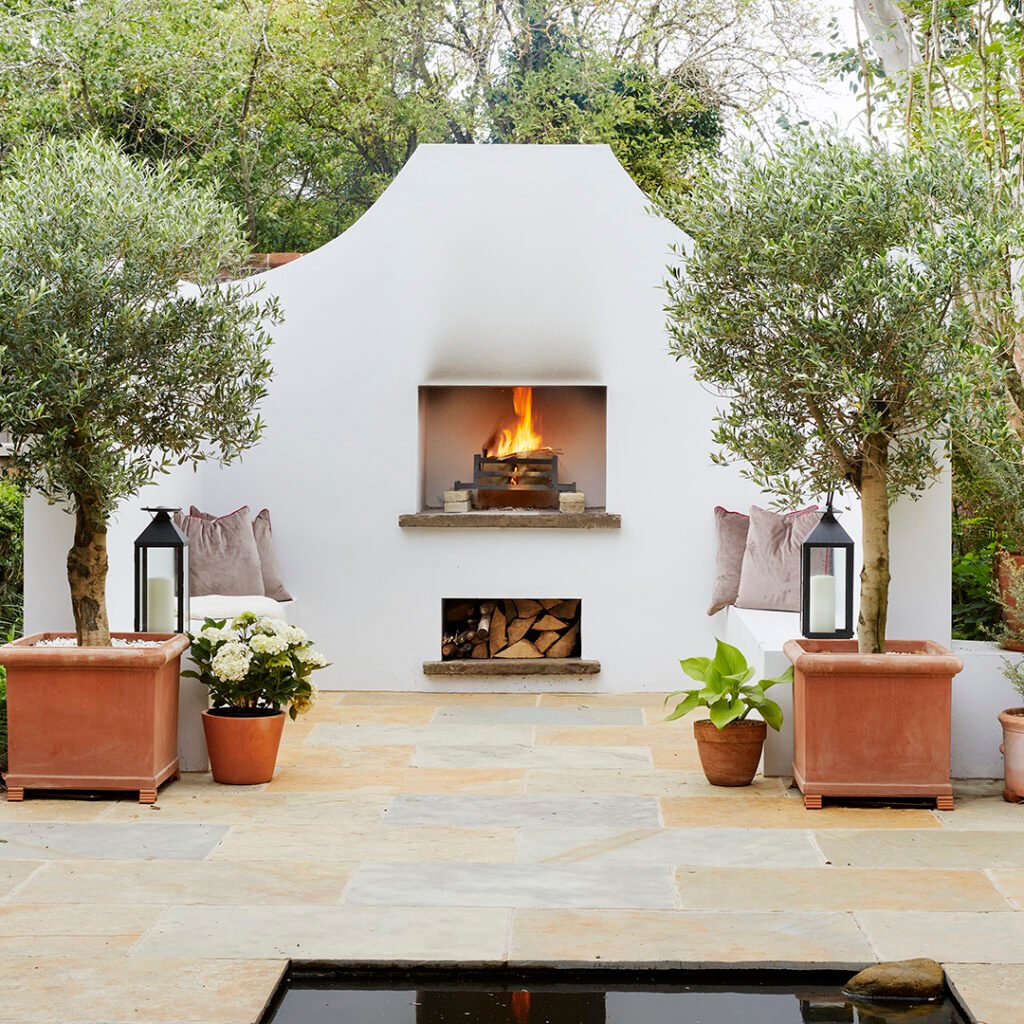
For a design that feels organic and grounded, go rustic. Use natural materials like rough-hewn stone, reclaimed wood, and gravel to mirror the textures of the surrounding landscape. This approach works especially well in countryside or woodland settings.
How to achieve it:
- Build low stone retaining walls or seating benches that double as garden borders.
- Incorporate native plants—wildflowers, grasses, and local shrubs—for an effortless, natural look.
- Use wooden beams or pergolas for partial shade and visual structure.
- Choose irregular-shaped stones for a casual, lived-in feel.
A rustic patio isn’t about perfection—it’s about comfort and authenticity. It should feel like it’s always been part of the landscape, weathered naturally over time.
Best for: Rural properties, woodland gardens, or anyone who loves a timeless, earthy look.
Bonus Tip: Blur Boundaries With Smart Planting
No matter which patio design you choose, soft transitions make all the difference. Avoid harsh borders or overly defined lines between patio and garden. Instead:
- Let groundcovers creep onto the patio edges.
- Use potted herbs or flowers to visually bridge gaps.
- Plant shrubs or small trees at varying distances to create depth.
This seamless blending draws the eye naturally across your space, making your patio and garden feel like one cohesive environment.
Final Thoughts
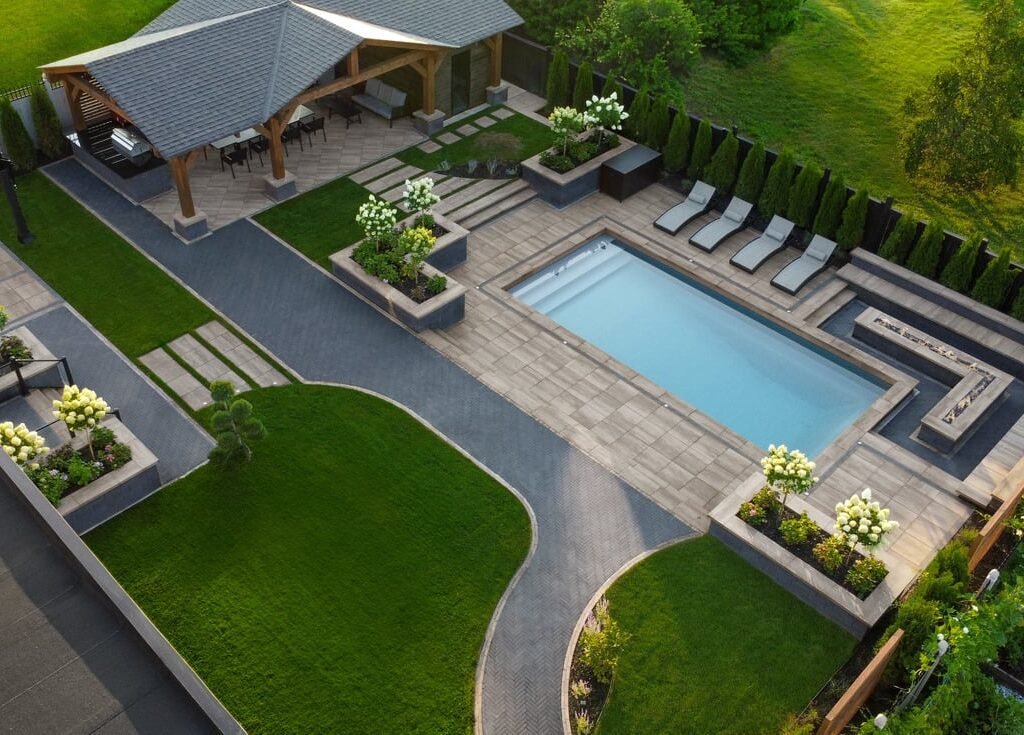
A beautiful patio doesn’t stand apart from your garden—it grows out of it. Whether you prefer modern lines, rustic charm, or romantic abundance, the key is to design with nature rather than against it. Choose materials, plants, and layouts that complement your landscape’s existing rhythm.
With thoughtful planning, your patio can become an inviting outdoor room that feels perfectly integrated with your garden — a tranquil space where you can dine, unwind, and reconnect with nature, every day.
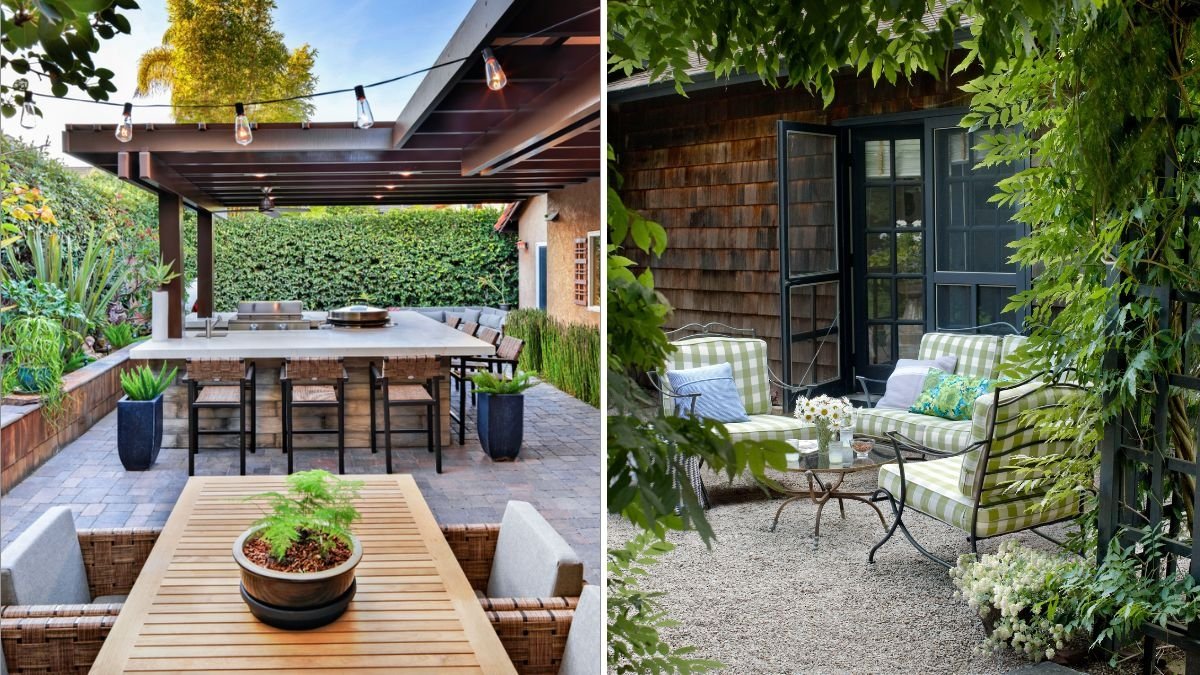





Leave A Comment